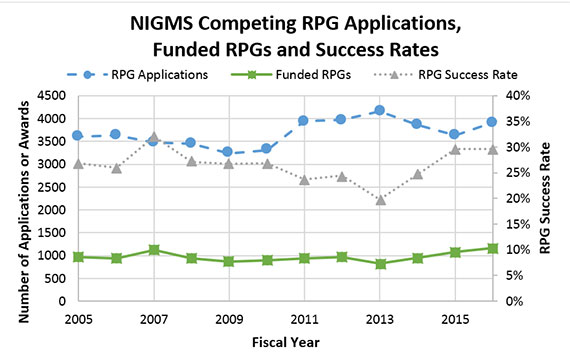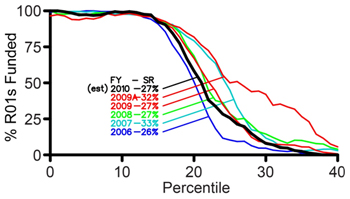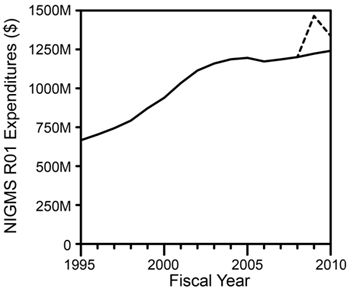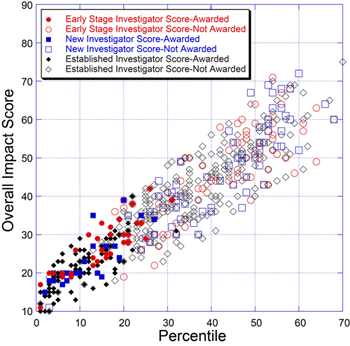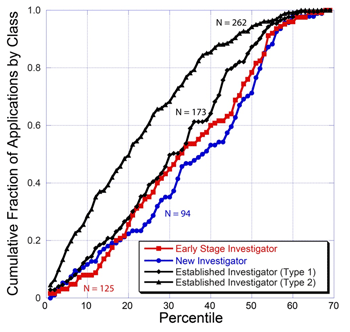As we work on issuing a new funding opportunity announcement (FOA) for the established investigator (EI) MIRA program, we thought it would be useful to address a few common questions we’ve been hearing. The new FOA will allow applications from NIGMS grantees who have one or more single-Principal Investigator (PI) R01-equivalent awards, just as the current FOA does. In addition, the new FOA (to be published by Fall 2019) will allow renewal applications from PIs who already have MIRA grants.
Continue reading “Planning for Maximizing Investigators’ Research Award (MIRA) Renewals”Tag: R01
Application, Review, Funding, and Demographic Trends for Maximizing Investigators’ Research Awards (MIRA): FY 2016-2018
NIGMS has made MIRA awards to Established Investigators (EI) and Early-Stage Investigators (ESI) for three full Fiscal Years (FY). In this Feedback Loop post, we provide an analysis of application, review, funding, and demographic trends for the MIRA program.
For the first two rounds of EI MIRAs, eligibility was limited to well-funded NIGMS investigators: PIs with two or more NIGMS R01-equivalent awards or one NIGMS R01-equivalent award for >$400,000 in direct costs. For the FY 2018 EI competition and beyond, eligibility was expanded to include any investigator with a single PD/PI NIGMS R01-equivalent that is up for renewal. For the FY 2016 ESI MIRA competition, ESIs and New Investigators (NI) at the assistant professor or equivalent level were eligible, whereas eligibility was restricted to ESIs in subsequent rounds. As always, a PI can apply for an extension of ESI status for various life and career events, including childbirth.
Continue reading “Application, Review, Funding, and Demographic Trends for Maximizing Investigators’ Research Awards (MIRA): FY 2016-2018”A Historical Analysis of NIGMS Early Stage Investigators’ Awards and Funding
One question that has been asked about the Maximizing Investigators’ Research Award (MIRA) for Early Stage Investigators is how awardees will be affected by the fact that they cannot have additional NIGMS research grants. In response to this question, we reviewed the research project grant (RPG) funding history of all 707 Principal Investigators (PIs) who received an NIGMS R01 as an Early Stage Investigator (ESI) between Fiscal Years 2009 and 2015. The PIs were grouped by Year of PI, which ranges from Year 1 to Year 5 (five years is the typical length of an ESI R01 award). Year 1 is the year in which the PI was awarded his or her initial R01, and Year 2-Year 5 represent the subsequent years. The awards and funding history of each PI were confined to Fiscal Years 2009-2015; thus, all PIs are included in the Year 1 group, while those who received their initial R01 in 2013, for example, would only appear in the Year 1-Year 3 groups.
The distribution of NIGMS awards (including subprojects) for these PIs is depicted below.
Adding up the percentages of PIs with two and three awards, Figure 1 shows that the percentage of PIs with more than one active NIGMS award ranges from 2.8% in Year 1 to 13.9% in Year 5. Continue reading “A Historical Analysis of NIGMS Early Stage Investigators’ Awards and Funding”
Distribution of NIGMS R01 Award Sizes
We have published median and mean direct cost award amounts for R01 grants, but these statistical aggregates can mask variations present in our grant portfolio. In this analysis, we illuminate two major differences in R01 award size distributions: those between single-principal investigator (PI) and multiple-PI (MPI) grants and those between new and competing renewal grants. It is worth noting that the numbers are per award values rather than the total NIGMS support provided to investigators and that award size can also be influenced by NIH-wide policies and NIGMS-specific policies that promote the consideration of multiple factors in making funding decisions.
The first major distinction in NIGMS R01s exists between single-PI and MPI awards. NIH has allowed applications that identify more than one PI since Fiscal Year 2007. Many MPI applications request, and receive, larger amounts of funding than do typical single-PI applications. As shown in Figure 1, single-PI awards have a size peak in the range of $175,000-200,000 in direct costs (funds typically directly associated with the research project rather than overhead costs), while MPI awards tend to have larger budgets and a broader size distribution. MPI awards are, on average, approximately 25% larger for each additional PI (data not shown).




